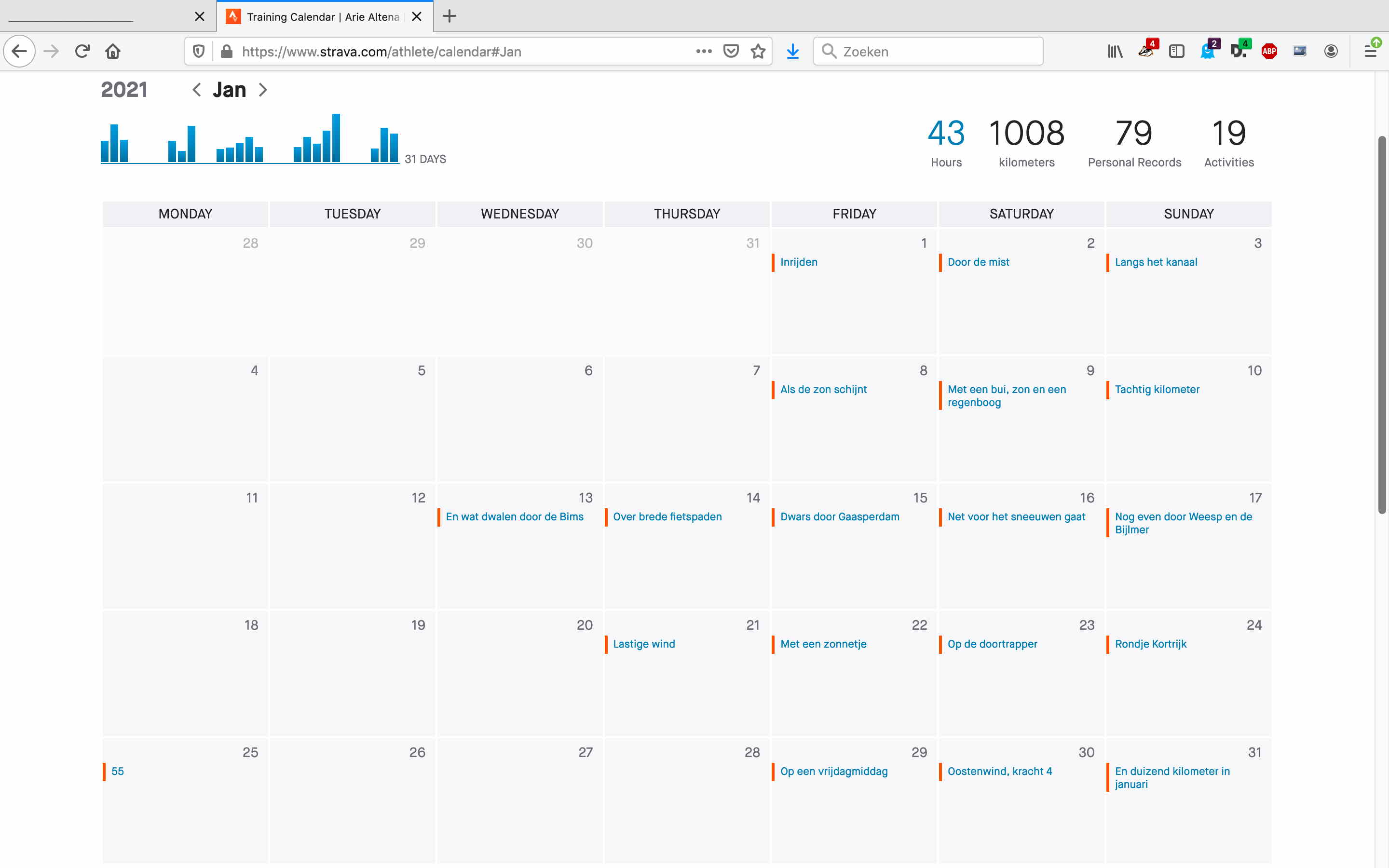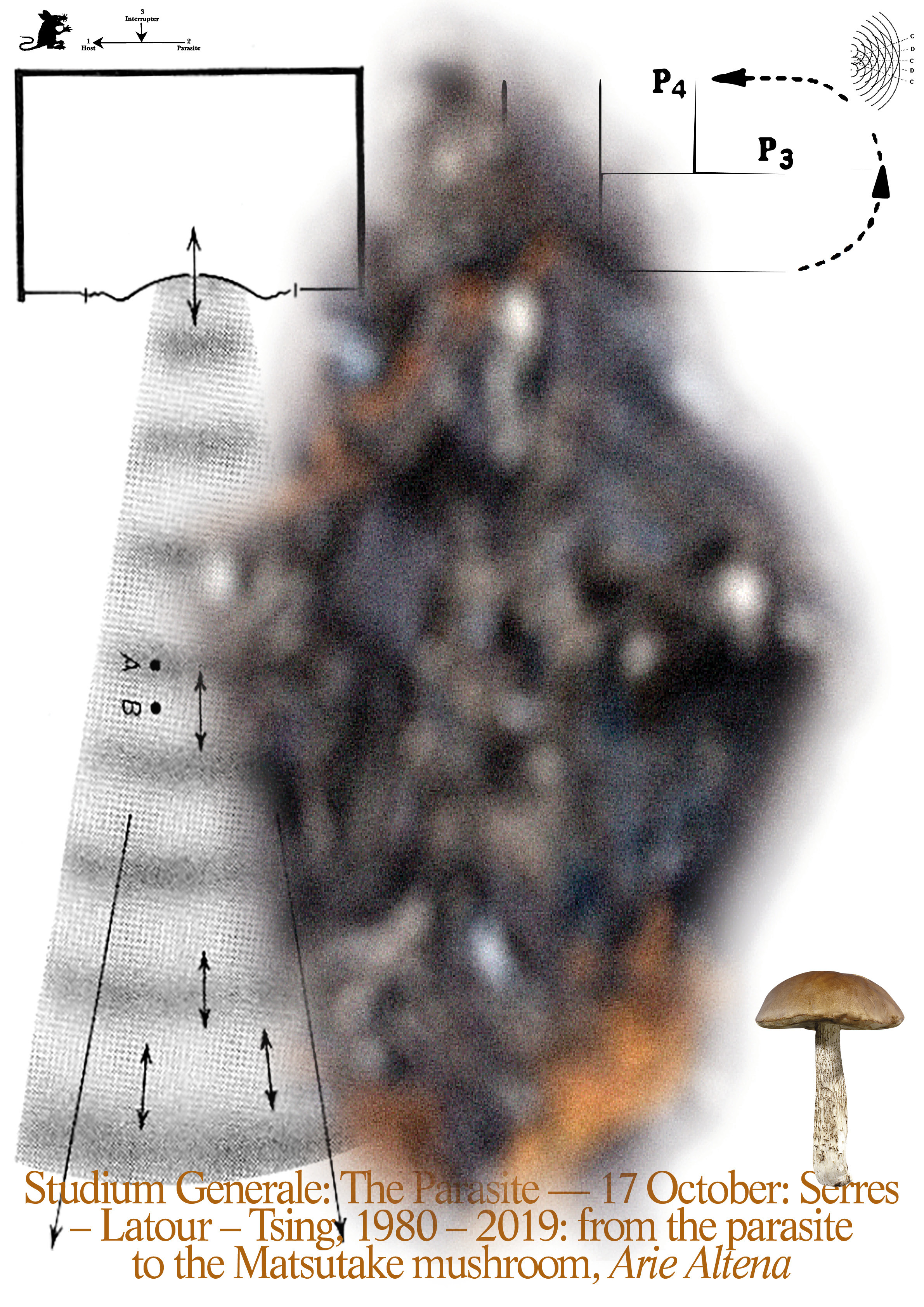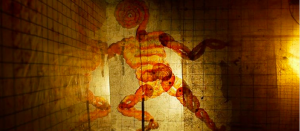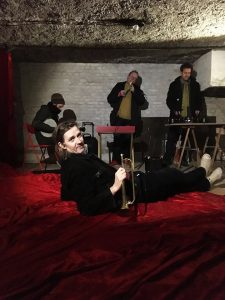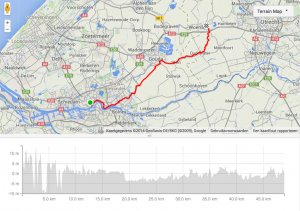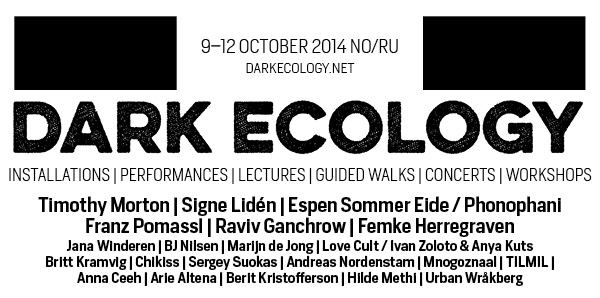
Initially I had the idea to make a short reading list for the Dark Ecology project. A couple of articles, a few interviews, maybe an online lecture that together offer an introduction to the theme. A bit like a syllabus for a graduate seminar. But the journey is not conceived as a graduate seminar, and I’m not a professor teaching a course. Therefore instead of a syllabus, I have made an overview of some of the theories, ideas, philosophical directions and books that have guided my thinking for ‘Dark Ecology’. It’s not exhaustive – and probably anyone can think of an important book or a theoretical approach that’s dearly missing from this overview. The overview contains pointers to books and online resources, and is ‘spiced’ up with a few provocative or informative quotes from the mentioned books.
Timothy Morton: Dark Ecology
We have indeed borrowed the term ‘Dark Ecology’ from the work of Timothy Morton. Over the past couple of years he has written a number of books outlining an ‘Ecological Thought’ that has no use for the Romantic notion of ‘Nature’. He begins to explain this idea in Ecology without Nature (2007) – a book which is also about art and ‘environmental aesthetics. In The Ecological Thought (2010) he shows that the ‘ecological thought’ is not nice and green and a celebration of all things natural, but that to really think the interconnectedness of all forms of life and all things (the ‘mesh’), is dark. ‘Dark ecology puts hesitation, uncertainty, irony, and thoughtfulness back into ecological thinking. The form of dark ecology is that of noir film. The noir narrator begins investigating a supposedly external situation, from a supposedly neutral point of view, only to discover that she or he is implicated in it. The point of view of the narrator herself becomes stained with desire. There is no metaposition from which we can make ecological pronouncements. Ironically, this applies in particular to the sunny, affirmative rhetoric of environmental ideology. A more honest ecological art would linger in the shadowy world of irony and difference. …The ecological thought includes negativity and irony, ugliness and horror.’ In Realist Magic (2013) Morton sides with Object Oriented Ontology, and particularly with the ideas of the American philosopher Graham Harman, to further explain how we can conceive of the world. He continues this trajectory in Hyperobjects: Philosophy and Ecology after the End of the World (2014). In this book he explains what a hyperobject is (global warming is an hyperobject), and what the ‘end of the world’ means for philosophy. Here are three quotes from this last book: ‘But there is no “away” after the end of the world. It would make more sense to design in a dark ecological way, admitting our coexistence with toxic substances we have created and exploited.’ And: ‘Hyperobjects are directly responsible for what I call the end of the world, rendering both denialism and apocalyptic environmentalism obsolete.’ And: ‘For what comes into view for humans at this moment is precisely the end of the world, brought about by the encroachment of hyperobjects, one of which is assuredly Earth itself, and its geological cycles demand a geophilosophy that doesn’t think simply in terms of human events and human significance.’ And as I am busy quoting, here’s another long one from Hyperobjects: Philosophy and Ecology after the End of the World that partly summarises Morton’s philosophy: ‘There are objects: cinnamon, microwaves, interstellar particles and scarecrows. There is nothing underneath objects. Or, better, there is not even nothing underneath them. There is no such thing as space independent of objects (happily contemporary physics agrees). What is called Universe is a large object that contains objects such as black holes and racing pigeons. Likewise there is no such thing as an environment: wherever we look for it, we find all kinds of objects—biomes, ecosystems, hedges, gutters and human flesh. In a similar sense, there is no such thing as Nature. I’ve seen penguins, plutonium, pollution and pollen. But I’ve never seen Nature (I capitalize the word to reinforce a sense of its deceptive artificiality).’
Morton’s Realist Magic is available online: http://openhumanitiespress.org/realist-magic.html. Through Morton’s blog you can also find a number of his lectures and seminars: http://ecologywithoutnature.blogspot.com/, his youtube-page with lectures is here: https://www.youtube.com/channel/UCZzyz52s2D6f8uRF0EmOaZw
Bruno Latour: Politics of Nature (2004) and AIME (2013)
in his book Politics of Nature (2004) Bruno Latour also defines an ecology without the notion of ‘Nature’. In this book he states ‘if “nature” is what makes it possible to recapitulate the hierarchy of beings in a single ordered series, political ecology is always manifested, in practice, by the destruction of the idea of nature.’ (p. 25). The idea of nature that political ecology has to let go of is the result of a political division that puts the indisputable and objective on one side, and the subjective and disputable things on the other. According to Latour, we have to escape from that division to be able to make a common world. The issue is rather to find out how humans are ever more and ever more intimately attached to a panoply of non-human natures. This idea is – for me – the core of the Dark Ecology project. Latour’s most recent book – and webplatform – An Inquiry into Modes of Existence (2013) is an ambitious attempt how to compose such a common world. It starts from this cue: ‘Not so long ago, the project that would have seen modernization spread over the whole planet came up against unexpected opposition from the planet itself. Should we give up, deny the problem, or grit our teeth and hope for a miracle? Alternatively we could inquire into what this modern project has meant so as to find out how it can be begun again on a new footing.’ It’s not an easy book, as it challenges you to conceive differently of a lot of ideas that have guided western thought since Modern times. The English webplatform of AIME is accessible at http://www.modesofexistence.org/, a lot of Latour’s articles and video lectures are available at http://www.bruno-latour.fr/
Michel Serres: Times of Crisis (2009) and Biogea (2012)
Times of Crisis is a short book by Michel Serres explaining his ideas of the new relationship between humans and the world, which leads to a new science and a new society. The English translation is from 2014, the French original from 2009. He writes: ‘The term anthropocene means nothing else: we used to think of ourselves as the individual or collective subjects of a passive object, the world. Reversal: we become the objects of the new subject Biogea.’ (p. 47) And: ‘An immense era of our history is ending; furthermore, the time of our hominescence begins. Our past will not help us much to dialogue with our new Biogean partner, whose immanence requires a new science, new behaviors and another society.’ (p. 48) Biogea could be seen as Serres’ autobiography. He focuses on the relationship between Earth and human, and how the Earth speaks to the human. It is an almost novelistic account of his idea of ‘biogea’. It is interesting and highly readable – unless you can’t stand Serres’ particular mix of autobiography, poetry, myth, science and philosophy. Info on Times of Crisis: http://www.bloomsbury.com/us/times-of-crisis-9781623564346/, and on Biogea: http://www.upress.umn.edu/book-division/books/biogea
OOO – Object-Oriented Ontology
The ideas of several other ‘OOO’-philosophers and theorists – apart from Timothy Morton – are also relevant in relation to Dark Ecology. OOO posits a world that does not prioritise the human perspective, and philosophically attempts to take into account a world prior to humans. I particularly like the work of Graham Harman, for instance Guerrilla Metaphysics (2005), Prince of Networks (2009), and Weird Realism (2012). There is a plethora of OOO-related discussions online, as many of the OOO-philosophers blog regularly and passionately. The publications by Urbanomic, particularly the issues of their magazine Collapse, are an excellent starting point if you have missed it all: http://www.urbanomic.com/publications.php
Elizabeth Ellsworth & Jamie Kruse: Making the Geologic Now (2012)
A collection of theoretical text with examples from art and design, this book is definitely an inspiration for thinking about the convergence of the human and the geologic, and about art for the Antropocene. Ellsworth & Kruse are http://www.smudgestudio.org/, and they run the blog Friends of the Pleistocene: https://fopnews.wordpress.com/. An interview with them on nuclear waste and the vastness of geologic time can be found here: http://bombmagazine.org/article/1000109/jamie-kruse-and-elizabeth-ellsworth. You can download Making the Geologic Now at: http://punctumbooks.com/titles/making-the-geologic-now/, or consult the interactive webbook: http://geologicnow.com/.
Jan Zalasiewicz & others: ‘The Anthropocene, A new Epoch of Geological Time?’ (2011)
The idea of the Antropocene has very quickly gained a lot of support. Here is one of the definite scientific articles outlining why we should indeed conceive of the Antropocene as a new geological era: http://rsta.royalsocietypublishing.org/content/369/1938/835.full
Laurence Smith: The New North (2011)
In the past few years quite a number of books describe the Earth from a future perspective. Alan Weisman’s The World without Us (2007) is a journalistic account of what the world will look like without human presence. Jan Zalasiewics’ The Earth After Us (2008) describes what legacy humans leave in the rock, from the viewpoint of an alien civilisation one hundred million year in the future – it’s also a way of explaining what geology is doing. In The New North geographer Laurence Smith describes the Arctic in 2050, and how global warming will affect its economy and geopolitics. In Smith’ account Kirkenes becomes a major hub in the economic network. Two reviews: http://www.newstatesman.com/books/2011/03/natural-resources-world-global & http://blogs.lse.ac.uk/lsereviewofbooks/2012/09/01/book-review-the-new-north-our-world-in-2050/.
Arie Altena: Kirkenes – Nikel – Zapolyarny – Murmansk, (2013)
My own travelogue and report of the short 2013 journey to Kirkenes, Nikel, Zapolyarny and Murmansk: http://ariealt.home.xs4all.nl/2013/dark_ecology/kirkenes_nikel_murmansk.html
Arie Altena
